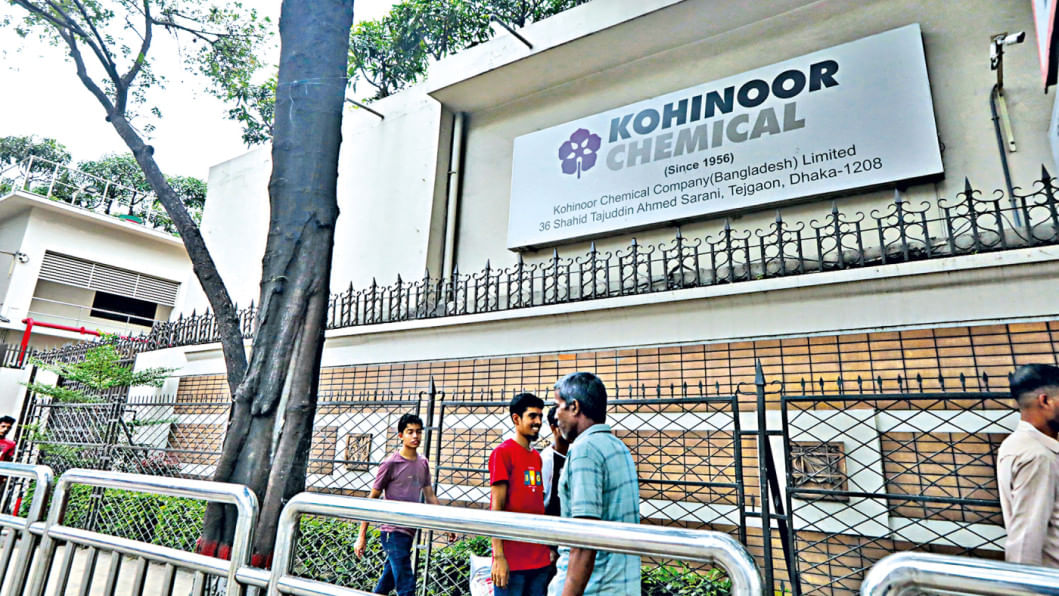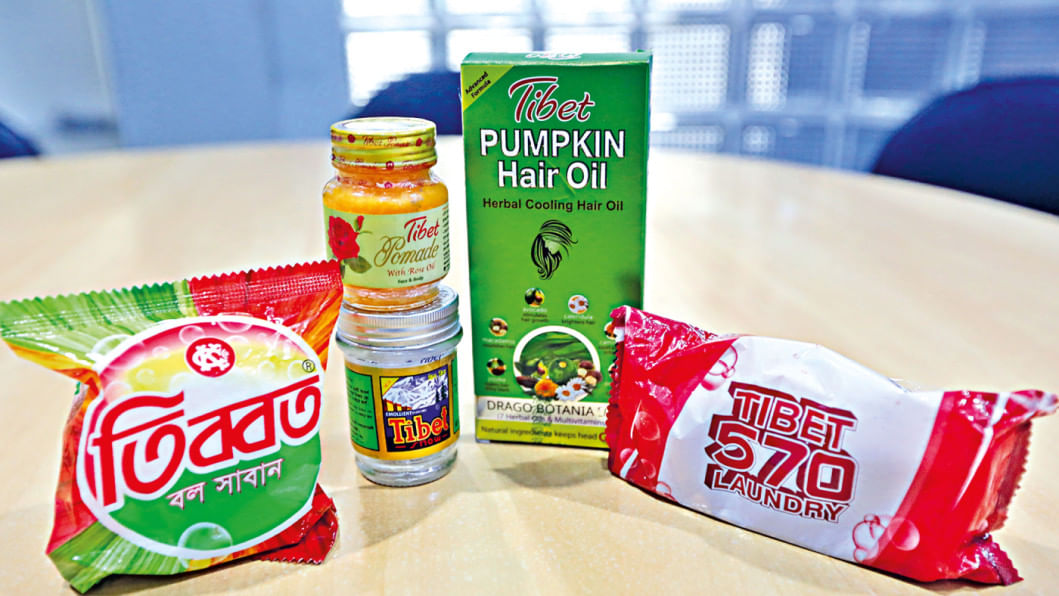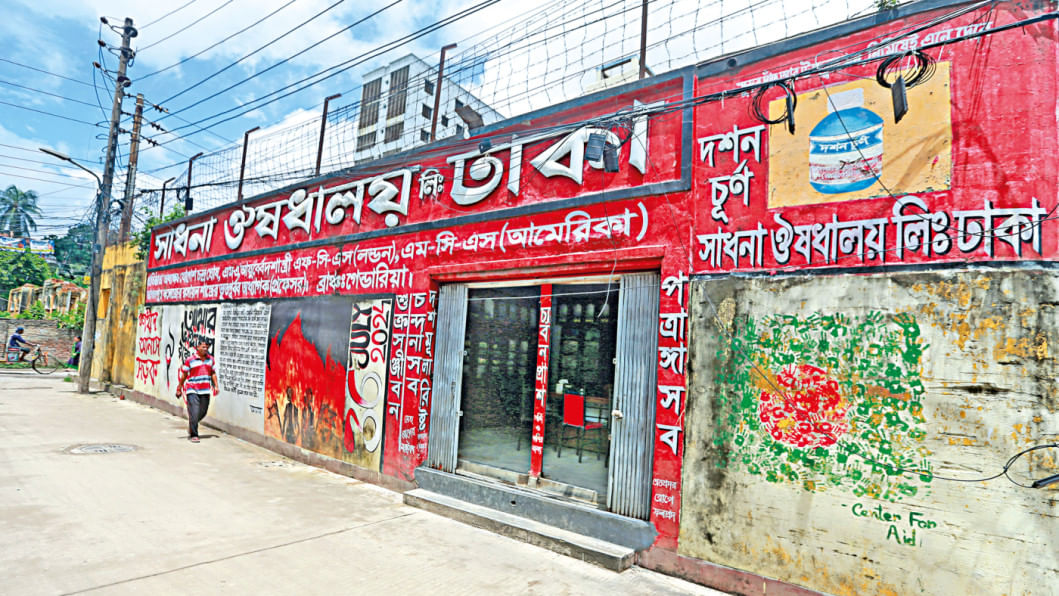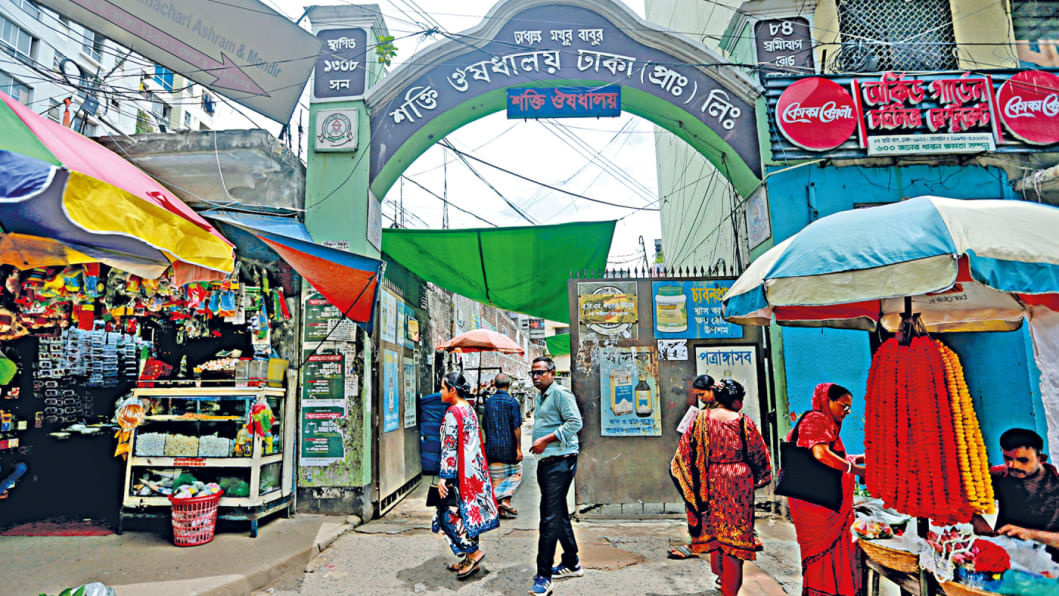The life cycles of household brands
"Boro Apur Biye, Cosco Saban Diye. Cosco Saban Valo Na, Boro Apur Biye Holo Na."
If you grew up in Bangladesh before the early 2000s, chances are this jingle still echoes in your memory even if you never used Cosco soap.
For decades, Cosco was more than a soap. It was a cultural reference point, a crown jewel of Commander Soap Company Limited. The soap was so popular that jingles appeared glorifying its status -- no ceremony, even a wedding, could proceed without it.
Cosco's story, and those of its peers, belong to a pre-internet Bangladesh, when globalisation had yet to reshape consumer choices. A few brands ruled with near-monopolistic influence, defining lifestyles and leaving cultural imprints that linger even today.
In those days, shopping was simple but deeply symbolic.
Gani Bekari's Bela biscuit was dipped in every cup of tea. "Wheel" became shorthand for detergent. Salt meant Mollah or ACI. Condensed milk meant Danish, powdered milk meant Dano. Coconut oils had their loyal followings: Gandharaj scented afternoons, while Parachute and Jui carved their niches.
Soaps carried personality: Palmrose, Jani, Lux, Rexona, Cosco, Aromatic Halal, Harmony, Sandalina, Tibet 570, Chaka. Stationery too carried weight: the Econo or EconoDX ballpoint was for daily use; Red Leaf was saved for exams.

For many, these products are inseparable from personal memory.
Sixty-seven-year-old Noorjahan Begum recalls how fragrance once defined social identity.
"Jani soap's scent was enchanting, costing Tk 25 in the 1970s," she said. "When I used those soaps, women around me would admire them, and many longed to have the same," said Begum.
Palmrose soaps were considered luxuries, while fragrant oils like Lokkhi Bilash or Tibet Kodur Tel marked elegance. Sarees such as Pakija, Mala Print, or Indian Organdi carried similar symbolic weight.
Many of the names survive today only as nostalgia.
Cosco, the first locally made transparent glycerine soap, rose in the 1970s when foreign brands were scarce and local demand was high. Its longevity and clarity set it apart; its glycerine content even won doctors' endorsements for sensitive skin.
By the 1980s, it had become ubiquitous in homes, restaurants, and weddings.
"After 1995, as domestic and international brands gained stronger footholds, demand for Cosco soap started to decline," a senior Commander Soap Company official told The Daily Star recently. "The owners did not place enough emphasis on marketing or distribution."
Packaging stayed dated, advertising lagged, and younger consumers turned to fresher, flashier options. By the 2000s, Cosco's visibility declined, though the company insists it is slowly regaining ground.
For another example, take Econo/EconoDX, once the most common ballpoint pen in every stationery shop, which is really hard to find.
"The ballpoint market is dynamic and ever-changing," said Muhammad Intisar Alam, professor of marketing at the University of Dhaka.
Explaining the pen giant's fall, he said, "Econo pens retained the same design and colour for decades without innovation.
"By contrast, Matador, originally a toothbrush manufacturer, entered the market with ergonomic grips, smoother bodies, and leak-proof caps. It anticipated consumer needs where older players did not," said Alam.
The story of Econo mirrors Cosco's: popularity is never permanent without adaptation, branding, marketing and revitalisation.

ADAPT, OR DIE
As Alam observed, "Markets never remain static. Failure to adapt can be costly."
Aromatic Beauty Soap lost relevance, too slow to diversify. By contrast, Unilever segmented its brands carefully -- Lux for urban consumers, Lifebuoy for rural households, Dove for higher-income buyers.
Local companies such as Kohinoor Chemicals have made efforts to modernise in recent years. Even heritage products like Rooh Afza face pressure to innovate.
Selim H Rahman, chairman of furniture giant HATIL, sees a generational element to decline. "Many businesses peak under one generation but falter under the next, often due to family conflict or lack of clear direction."
"Innovation is essential. Companies that don't adapt or improve fall behind, while new competitors keep entering the market with fresh ideas. Without innovation, brands lose their place," he added.

THE GIANTS OF TODAY
Fast forward to the 2020s, and Bangladesh's consumer landscape looks utterly different. Today's markets are oligopolistic, segmented, and heavily influenced by global brands.
Unilever Bangladesh dominates soaps with Lifebuoy, Lux, and Dove, alongside rivals such as Square's Meril, Kohinoor's Tibet and Sandalina.
In haircare, Sunsilk, Clear, Revive and Himalaya compete, while Glow & Lovely remains entrenched in skincare.
Shamima Akhter, director of corporate affairs at Unilever Bangladesh, points to the company's longevity: "We have several iconic brands in our portfolio, including Lux, Lifebuoy, Wheel, Sunsilk, Vim, Glow & Lovely, Surf Excel, Closeup and Horlicks, which have inspired generations."
Local players are no less ambitious. Square Toiletries Limited (STL), a subsidiary of Square Group, has built over 20 brands spanning health, hygiene, oral care, baby care, and fabric care.
Its flagship, Meril, now valued at Tk 1,000 crore, dominates categories from baby shampoo to petroleum jelly.
In sanitary napkins, Senora leads. Kool Shaving Foam, Jui Oil, Chaka Washing Powder, and Sepnil Handwash further reinforce its reach.
"A brand cannot be built overnight," said Jesmin Zaman, STL's head of marketing. "Quality always comes first; if there is any risk, a product is never launched."
Kohinoor Chemical Company (Bangladesh) Limited, maker of Tibet and Sandalina, likewise leans on heritage while investing in modernisation.
"Our heritage is our strength. "That is why we say with pride: The oldest is the best," said Golam Kibria Sarkar, KCCL's vice-president for brand. With distribution in over 550,000 outlets, the company has ensured Tibet remains one of Bangladesh's oldest yet trusted soap brands.
In recent years, Kohinoor has modernised through a comprehensive BMRE programme supported by European expertise, transforming into an innovation-driven enterprise.
Keya Cosmetics continues to rely on its flagship soap, supplemented by detergents and personal care products.
Almasud Kamal, senior manager at the company, noted, "We have maintained uncompromising quality from the outset, while offering competitive prices. Our products are also attractively packaged, ensuring both visual appeal and convenience."

WHAT MAKES A BRAND LAST
"As a rule, a brand endures only when it is both cherished by consumers and profitable for its producers," said Asif Iqbal, visiting faculty at the Institute of Business Administration. "It must deliver value to consumers while remaining commercially viable. Customer loyalty alone cannot sustain a brand."
Iqbal stresses that adaptability is key.
Drawing from his experience at American Express, Unilever Bangladesh, Shwapno, and Meghna Group of Industries, he said, "While many still prefer bar soaps like Lux, future trends may favour liquid formulations. Traditional soaps risk vanishing unless they adapt."
Others highlight marketing itself.
"Brands need periodic revitalisation to remain relevant," said Syed Alamgir, a veteran of the sector who has worked at multiple retail conglomerates.
"At times, companies spend several crores just to reduce the price of a product by one taka. Those unwilling to invest in revitalisation eventually fade," he noted.
Unilever's marketing strategy has been immensely successful when it comes to soap bars. From Marilyn Monroe's dressing room to rural Bangladeshi bathing ponds, LUX transformed soap into stardust. Bangladeshi women first treasured imported bars for special occasions until local production began in 1962. But now, no more.
Born in 1894 to combat cholera, Lifebuoy's medicinal scent became Bangladesh's aroma of safety through innovative advertisements. During floods, helicopters dropped these red bars alongside food relief.
Weakness in strategy, quality control, or management hastens the decline. Alamgir cites Halal Soap, which disappeared after its owners failed to invest in rebranding.
Marketing veteran Mahbub Baset of chief operating office FMCG of Group CMO at IFAD Group, adds that Bangladesh has seen few iconic campaigns in recent decades.
Popular jingles like "Diner Seshe, Rongin Deshe, Tumi Ami r Danish", "Eka Eka Khete Chaw, Dorja Bondho Kore Khaw", "Jole Vasa Padma Ami, Sudhui Pelam Cholo Na" created identities for brands.
"When I was in school, Bata's 'Hati Hati Paye Paye' became a legacy. In the 1990s, campaigns by Mount Shampoo, Grameenphone, Danish Condensed Milk or Philips all shaped consumer imagination. Today, such campaigns are rare."
Globally, Baset observed, brands like Nokia lost to Apple and Samsung due to a lack of innovation.
Yet innovation need not be flashy. Kamruzzaman Kamal, marketing director at Pran-RFL, points to the group's origins in solving everyday problems. "RFL began with tube-wells to address unsafe drinking water. Products that solve real problems endure."
Pran applied the same philosophy to food processing, reducing waste of seasonal crops like mangoes and tomatoes. Today, Pran-RFL spans 41 brands across consumer goods, electronics, furniture, and food.
"Our purpose-driven approach ensures trust across generations," Kamal said.

LESSONS FROM THE PAST
It's hard to imagine that any product from any particular brand will become a part of your life in this era of global consumption. Name any product, there will be dozens, if not hundreds, of brands producing it– be it your evening tea and cookies, hair oil or soaps.
The rise and fall of the brands remind us that popularity is fragile. In the slow-consumption era of the 1970s and 80s, familiarity was enough to guarantee loyalty. But today, with global competition, shifting lifestyles, and rapid technological change, survival requires relentless reinvention.
Asif Iqbal summed it up best: "Brands that embrace innovation survive, while those that resist change fade away."
And perhaps that is the enduring lesson. Yesterday's giants were more than products; they were culture. Today's giants, too, must remember that to remain relevant in tomorrow's Bangladesh.


 For all latest news, follow The Daily Star's Google News channel.
For all latest news, follow The Daily Star's Google News channel. 

Comments